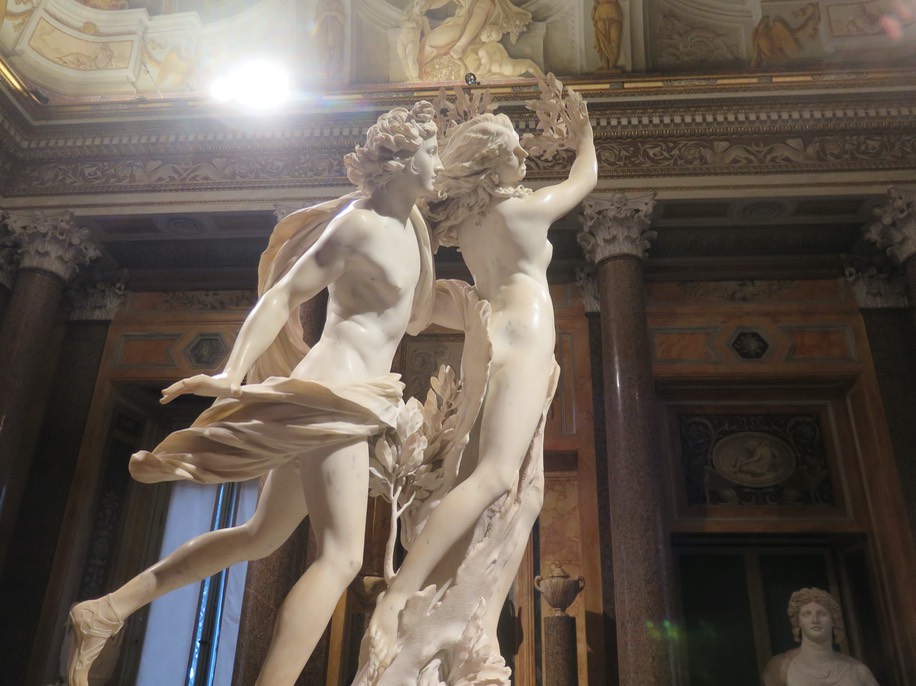
Bernini’s Apollo and Daphne (Borghese Gallery)
Our whole group took the tram into town. We had an excellent tour of the Capitoline Museum, on the world’s first Capitol Hill. We learned about Roman sculpture and how to understand its context—the giant foot was part of a colossal statue of Constantine, but the sculptures of children are just lawn decorations. We learned how to identify early and late works, figure out which emperor each represents and why many statues include tree trunks (for support).
We continued our walking tour in the Jewish Ghetto. Jews have lived in Rome since 200 BC, longer than any other group, making them the true Romans. There are sobering brass plaques in the sidewalk in front of houses to remember those who lived there and were taken by the Nazis. As we walked through the area we noted ancient, medieval, Renaissance and modern in the same place. There is a 1900-year old bas relief that someone had purchased and placed in a wall of a building housing modest businesses. Ruins of the ancient world are everywhere.
After we finished the tour, we went on our own to the Pantheon, which had been closed during the last tour. It was well worth coming back for. This was originally built by the ancient Romans as a temple to all the gods (“pan-theon”), with an oculus in the dome to let in light, and also tell the passing of the seasons. It was said that rain does not come through the open oculus, but there are drains in the floor. The multi-colored marbles, wide dome and glowing oculus are impressive. This has been maintained so well over the millennia because the Catholic church co-opted it and has used it as a church for centuries.
The highlight of the day was the Borghese Gallery. This former palazzo, within its surrounding park, limits visitors to its art collection to two-hour blocks that must be reserved weeks in advance. We got a greater appreciation of Bernini and Caravaggio there. We also learned that you did not want to be the owner of art that Cardinal Borghese wanted, since he would find a way to get it from you, and it may not be pleasant.